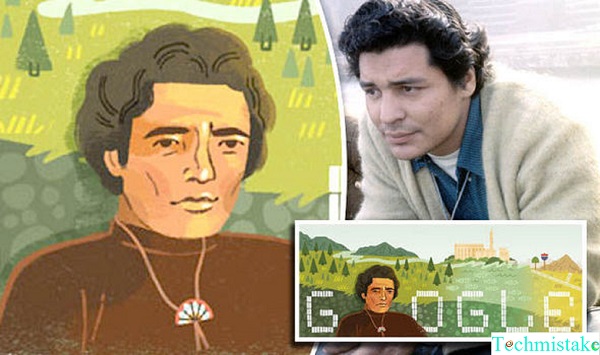Richard Oakes was a Native American activist best known for leading the occupation of the disused Alcatraz prison, which was credited with changing the narrative around indigenous peoples’ rights.
Tech mistake | He was shot and killed in 1972 but would have turned 75 today, and a Google Doodle has been created in his honor.
Oakes was a member of the Mohawk tribe, which originated in the northeastern United States and southeastern Canada.
Google Doodles

He was born in New York but migrated to San Francisco where he got to know local Native American communities. After enrolling at San Francisco State University, Oakes helped create a Native American studies department, one of the first in the country.
His academic and social connections, coupled with the revolutionary atmosphere of the late 1960s, led Oakes to launch some of the most radical direct action ever undertaken by Native American activists.
In 1969, he led a group of students and Native Americans to the site of Alcatraz prison, in the San Francisco Bay. Oakes swam to the island when the boats were stopped.
The activists turned Alcatraz into a sanctuary for Native Americans and made it a focal point for protest against the Indian termination policy.
Dating back to the 1940s, the policy enacted several measures aimed at integrating the Native American population into mainstream society. But Oakes and his fellow protesters argued for self -determination.
Oakes’ group released the Alcatraz Proclamation, announcing the intention to turn the island into an Indian cultural center, and offered to buy the land for $24 in cloth and beads – which European colonizers bought Manhattan Island for in 1626.
“We invite the United States to acknowledge the justice of our claim,” Oakes said a message to the San Francisco Department of the Interior. Richard Oakes
“The choice now lies with the leaders of the American government. To use violence upon us as before to remove us from our Great Spirit’s land. Or to institute a real change in its dealing with the American Indian.
“We do not fear your threat to charge us with crimes on our land. We and all other oppressed peoples would welcome the spectacle of proof before the world of your title by genocide. Nevertheless, we seek peace.”
The protesters, numbering around 400 at their peak, stayed on Alcatraz for more than a year. They drew significant media attention and fuelled the debate surrounding Native American rights.
A Native American tribe’s fight to preserve its language
The occupation had fizzled out by 1971 but was credited. With being the inspiration of at least 200 more acts of Native American protest. Most crucially, peaceful activism was credited with changing the US government’s position. On Indian termination and President Richard Nixon spoke in support of self-determination.
The Indian Self-Determination and Education Assistance Act was passed in 1975. It allowed federal agencies to work with recognized Native American tribes.
After leaving Alcatraz, Oakes continued his activism and was frequently arrested and suffered violence.
He was shot and killed after an argument with a California YMCA leader in 1972. His killer, Michael Morgan, was acquitted of murder.
The article was originally published here.
